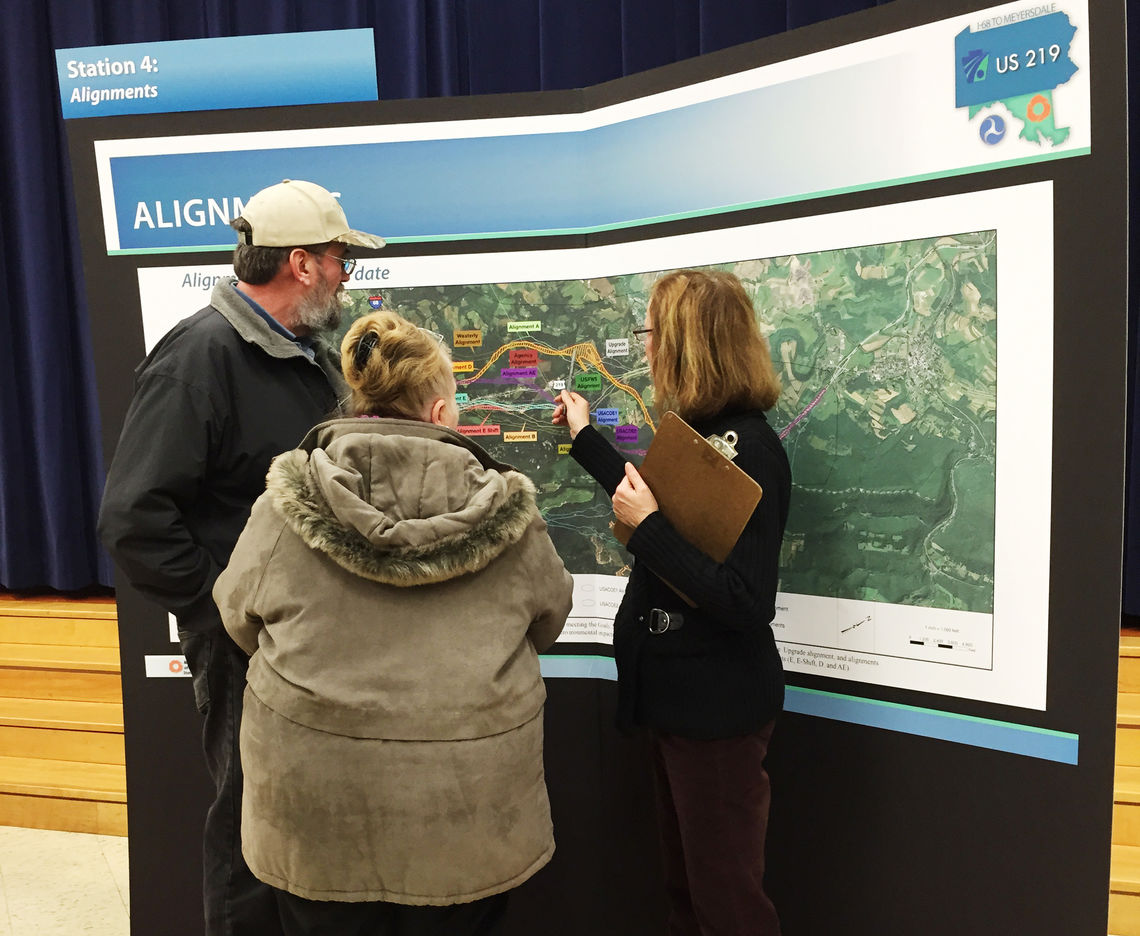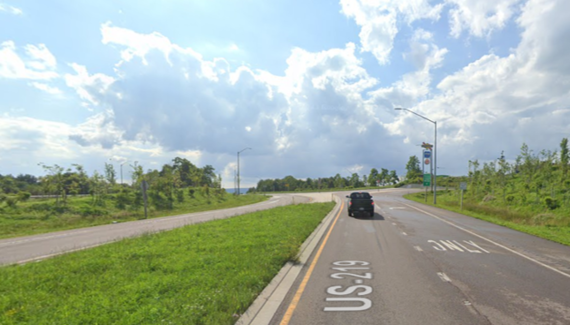
U.S. 219, I-68 INTERCHANGE, PEL STUDY
GARRETT COUNTY, MD
In 2014, the 2.5-mile section of U.S. 219 corridor within Maryland including the interchange at I-68 was identified as a top transportation priority for the State of Maryland.
THE CHALLENGE
In 2007, a Pennsylvania Department of Transportation (PennDOT) and Maryland Department of Transportation State Highway Administration (SHA), joint project, U.S. 219 Meyersdale, PA to I-68 in Maryland Environmental Impact Statement (EIS), was put on hold due to funding issues within the Commonwealth of PA. In 2014, the 2.5-mile section of U.S. 219 corridor within Maryland including the interchange at I-68 was identified as a top transportation priority for the State of Maryland.
The lack of north-south freeway-like access within Garrett County, MD was a contributing factor to the area’s stagnant economic growth and development. Existing traffic volumes and a high truck percentage (17 percent) negatively affected mobility. This, combined with geometric features on U.S. 219 that did not meet current design standards with regards to lane and shoulder width, hills (vertical grade), curves (horizontal curvature), and sight distance, created safety concerns for motorists. Certain areas of the U.S. 219 had a crash history that exceeds the statewide average for similarly designed roads. With the stoppage of the PennDOT / MDOT SHA joint EIS project, MDOT SHA needed a way to proceed with a portion of the project that would not conflict with National Environmental Policy Act (NEPA) requirements for the larger Meyersdale to I-68 EIS project. The solution was a Planning and Environmental Linkages (PEL) Study.
HOW WE HELPED
As planning consultant to SHA, McCormick Taylor’s tasks included breaking out the needs and evaluating logical termini and independent utility for a MD only portion of U.S. 219. The logical southern terminus was the I-68 interchange. The logical northern terminus needed to be at a point that made sense within the transportation network and did not result in any influence on future decisions related to the larger EIS project, which would be in conflict with NEPA. The PEL also had to prove that the proposed MD U.S. 219 project exhibited independent utility in that it meet the transportation need on its own without any further improvements required. McCormick Taylor assisted with identifying a range of interchange solutions and alignment options to demonstrate logical termini / independent utility without circumventing NEPA. PennDOT was also involved in the PEL study to ensure continued ability to pursue the larger EIS project in the future should funding become available.

RESULTS
This PEL study process was relatively new to both SHA and PennDOT, but this innovative approach led to the subsequent and stand-alone 1.5 mile long project that included the U.S. 219 interchange with I-68. The interchange was redesigned to better serve truck traffic and a section of the improved alignment was constructed northward on a new alignment just east of existing U.S. 219. The northern end point of the project was chosen to ensure that the previously studied EIS alternatives could still be built should the EIS project continue. Following the PEL, McCormick Taylor completed the NEPA study for the 1.5 mile long new alignment and redesigned interchange project to meet milestones under the constraints of a very demanding and streamlined schedule.
AWARDS
2017 MdQI SHA Planning Award